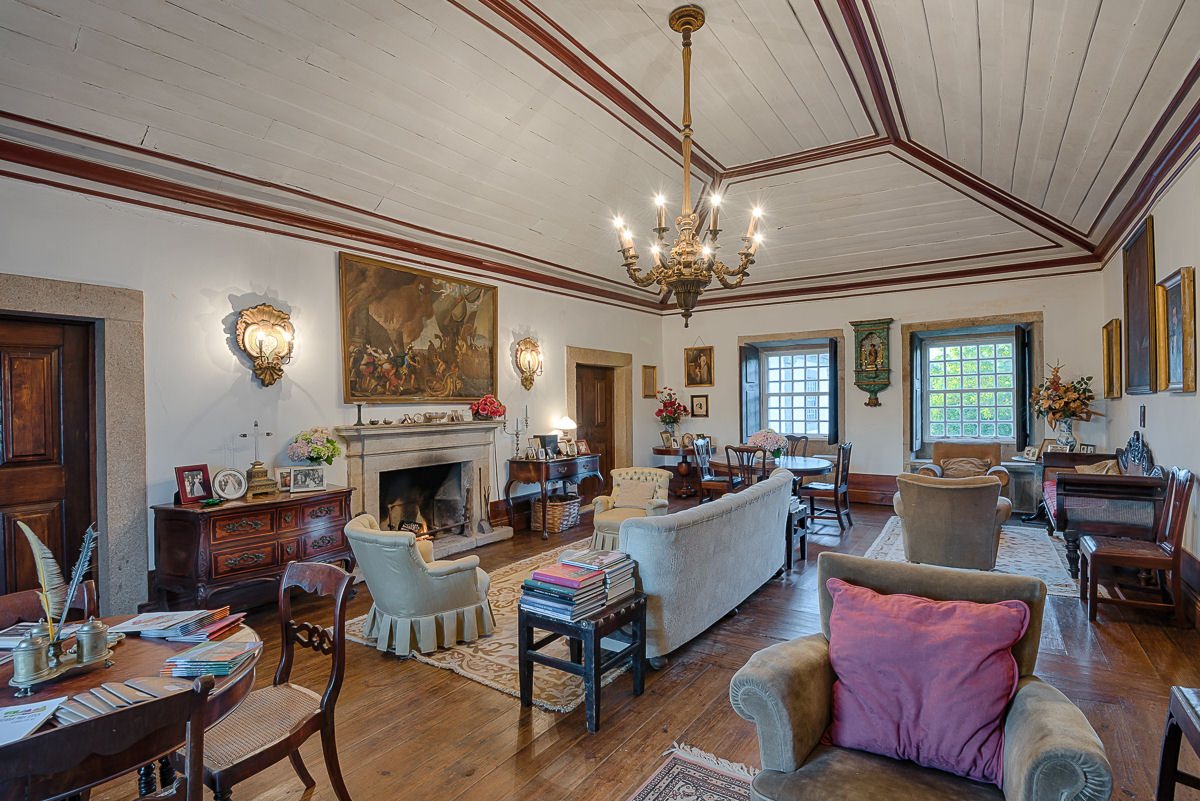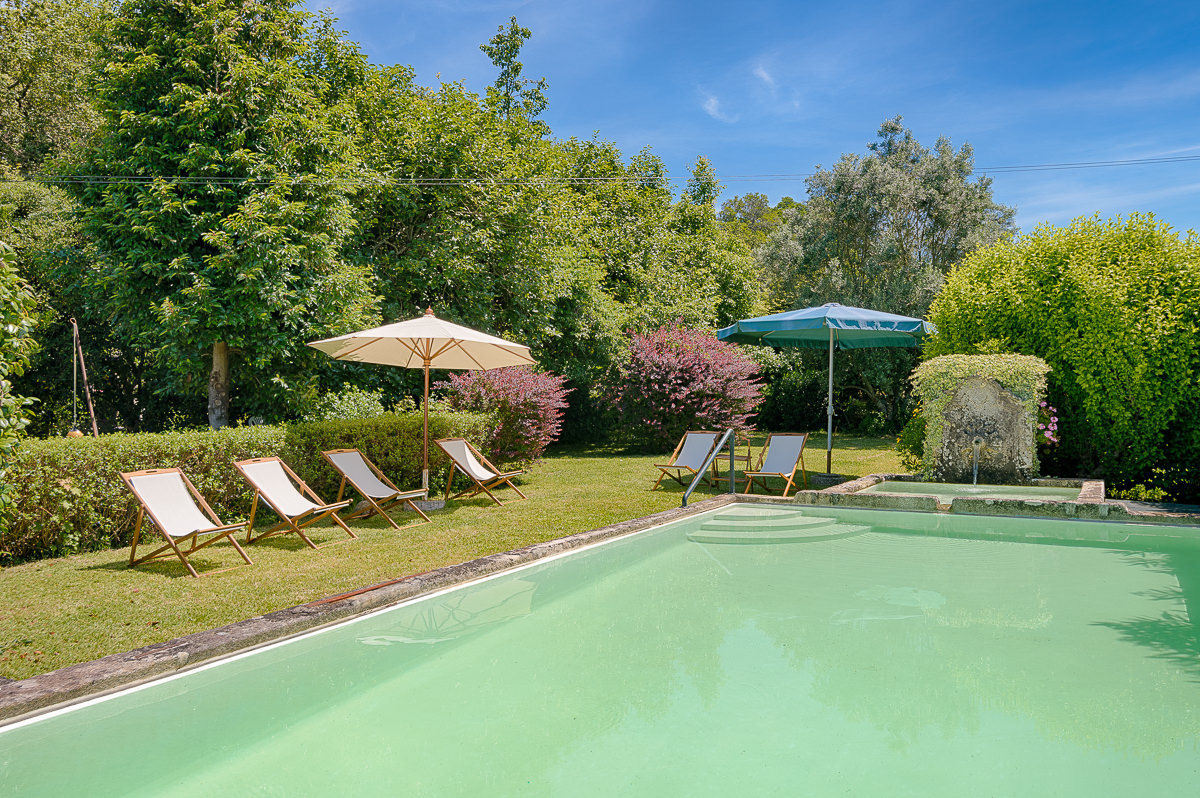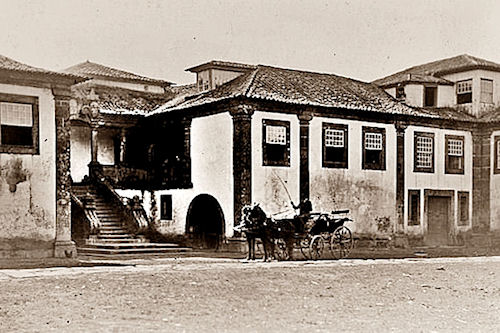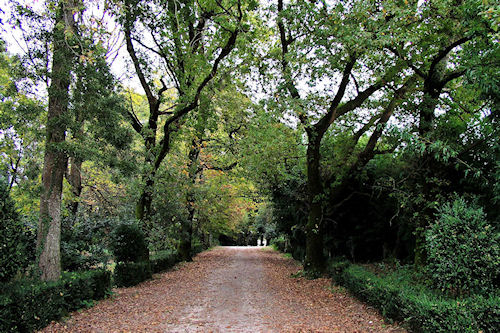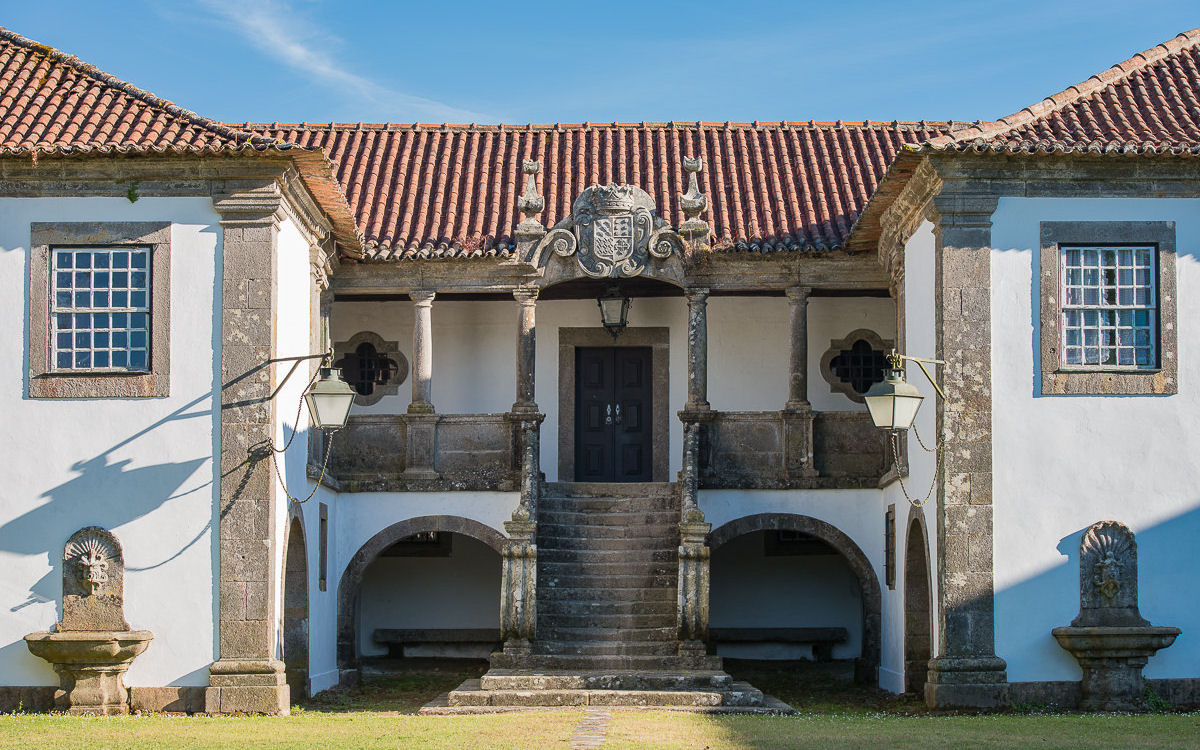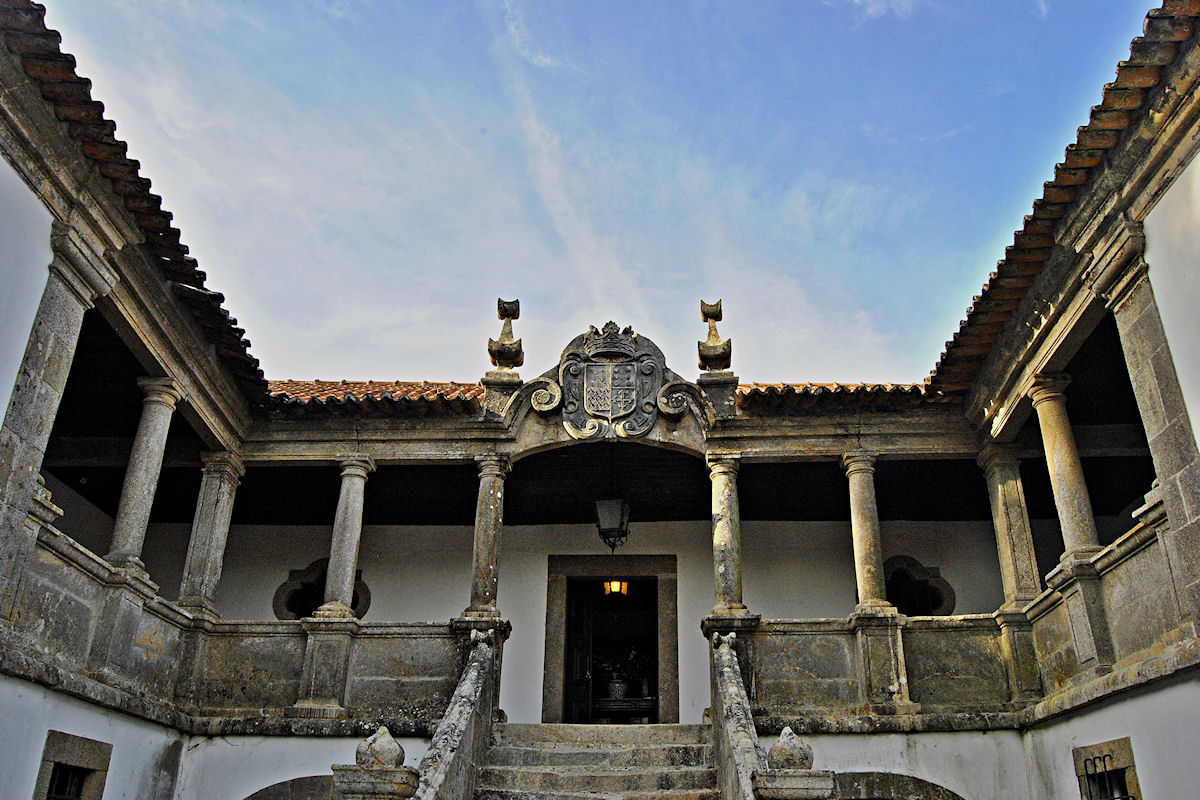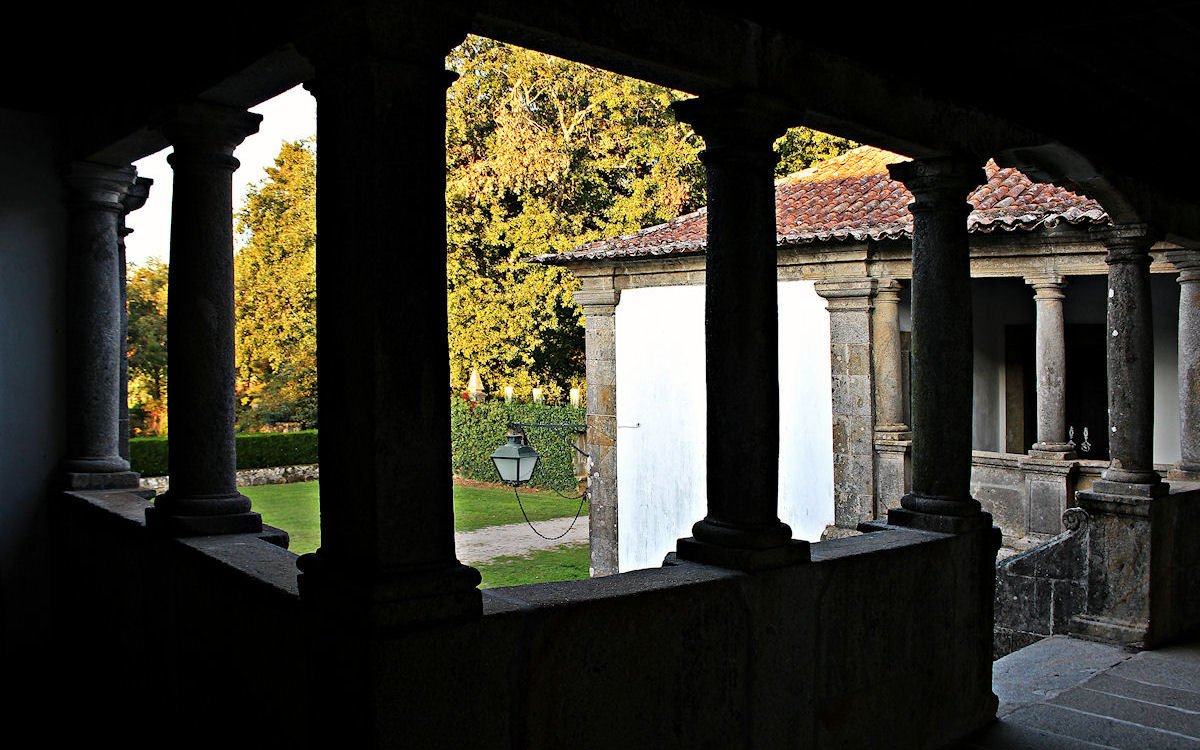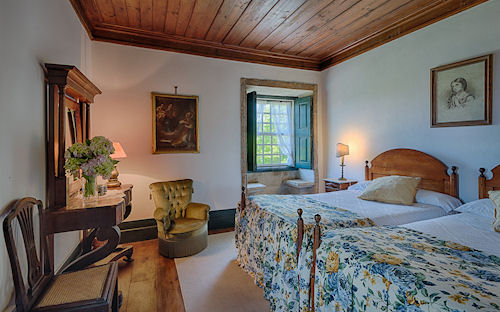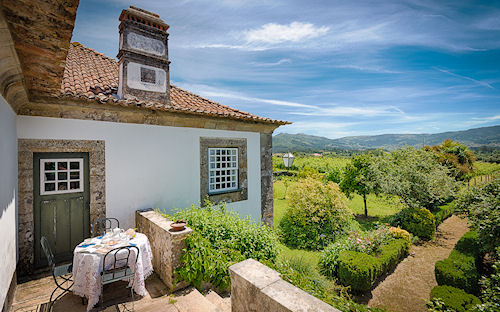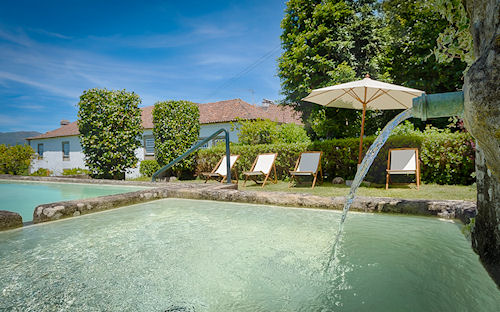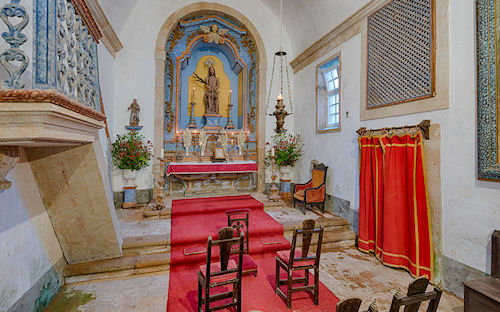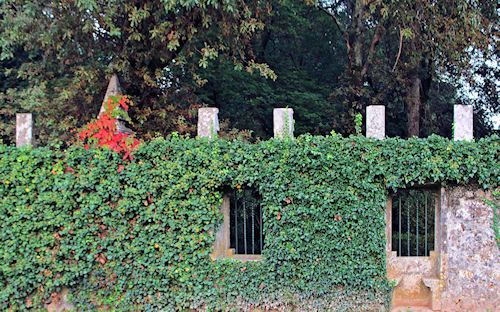The Family
 The Counts of Almada and Avranches own Paço de Lanheses since the nineteenth century.
The Counts of Almada and Avranches own Paço de Lanheses since the nineteenth century.
On 30th March 1818, Count D. Antão José Maria Almada married in Lisbon to the heiress of this estate, D. Maria Francisca de Abreu Pereira Peixoto Cirne, only daughter of Sebastião Abreu Pereira Peixoto Cirne, 1st Tenant-in-Chief of Vila Nova de Lanhezes.
In doing so he takes his place in the house, which belonged to his wife´s family since the sixteenth century.
Today the family is represented by D. Lourenço José Almada, born in April 1961 in Lanheses. He is the father of three children and shares the estate with his mother and four brothers.
Mentioning ancestors of this ancient and aristocratic family is the same as talking about the history of Portugal. The Almada family always fought for their ideals and for their country, with character and chivalrous nobility, taking part in events in land and sea that influenced the rest of Europe and the world.
Since the instauration of a constitutional monarchy and then the republic the Almada family retired from an active participation in the government. They disagree with government policies and watch with concern the mismanagement of the Heritage and Traditions that constitute their legacy.
THE ALMADA
COUNTS OF ALMADA AND ABRANCHES
This family established centuries ago in Lisbon, and according to ancient nobility records, descends from an English Crusader who had accompanied the fleet of Sir William Longsword, illegitimate son of Henry II of England and half-brother of Richard Lionheart, who came Portugal to fight the Moors during the conquest of this city.
According to legend, the first King of Portugal, D. Afonso Henriques, gave him the lands, he later named Almada, as a reward for his brave deeds.
It is documented that in 1445, the King of England Henry VI, awarded D. Álvaro Vaz de Almada the Most Noble Order of the Garter and the County of Avranches, a region with an important walled city located in the Duchy of Normandy, by the sea, as a reward for his participation in the Hundred Years War.
At the end of the fifteenth century, the eldest son of his second wife, D. Fernando Almada, accompanied D. Afonso V of Portugal to France to obtain help against Spain. The french monarch Louis XI granted him the title of Conte d’Avranches.
In the early nineteenth century, during the Succession War that turned later into the portuguese Civil War, the family was forced to leave Lisbon. Almada was one of the Kings Court Great Officer’s, serving as Grand Master of Ceremonies.
The 3rd Count of Almada and 15th of Avranches moved by that time to the north of Portugal, to the village of Lanheses, where he had an army at his command and established residence at his manor house: the estate comprising Paço de Lanheses.
At the present time the 8th Count of Almada and 19th Count of Avranches lives in Paço de Lanheses.
1st Count of Almada
2nd Countess of Almada
4th Count of Almada
5th Count of Almada
7th Countess of Almada and Sons
8th Count of Almada and Family
The Architecture
Paço de Lanheses, an impressive 18th century manor house, or palace as its name indicates, is a two storey “L” shaped building forming two wings.
At the front of the house, there is a smaller gate topped with the family coat of arms. This gate is flanked on either side by a couple of barred windows and leads to a large yard enclosed by a blattlement wall with merlons.
Two inscriptions run across the Chapel´s facade. The one on the left reads LOU / VADO SE / JA O. SANTI / SSIMO SA / CRAMEN / TO " (“Blessed be the Holyest Sacrament”). And the one on the right reads “O. MA / RIA. CONC / EBIDA. SEM / PECCADO R/ OGAI POR / NOS" (“Oh Mary! Conceived without sin, pray for us ”)
Historical references
In 1723, José Pereira de Brito who owned the property, requested that the chapel was transfered to its present location rendering it public and blessed in 1757.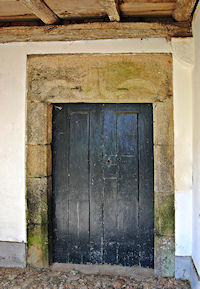 By then the entire house had undergone a general renovation respecting its archictectural style and without any alterations being made. The Abreu, Castro Brito and Pereira´s coat of arms tops the entrance staircase.
By then the entire house had undergone a general renovation respecting its archictectural style and without any alterations being made. The Abreu, Castro Brito and Pereira´s coat of arms tops the entrance staircase.
Over the gate accessing the large yard is the coat of arms of the family´s eldest son.
Under the house, to the east of the main entrance access stairs and behind one of the side arches, an old chapel door is still visible with a sixteenth-century bas-relief cross on its lintel.
Bibliography
«Solares Portugueses – Introdução à Casa Nobre, por Carlos de Azevedo, Livros Horizonte, Setembro de 1988, p. 151.»
«Casas com Tradição em Portugal, por Jorge Pereira de Sampaio, Estar Editora, Lisboa, 1998, p. 46 a 52.»
«A Caminho de Santiago - roteiro do peregrino, por Lourenço José de Almada, Lello Editores, Porto, Janeiro de 2000, p. 117 e 118.»
O Barroco no Alto Minho (2006): «Lanheses: Capela do Santo Cristo - 1722, Registo Geral ADB, 50, 290», por Manuel António Fernandes Moreira, Viana do Castelo, p. 41.
«Hotel Paço de Lanheses em Viana do Castelo, iGoGo - Guia de Turismo e Lazer de Portugal.»
The Lethes and the River Passage

The historian Strabo was the first to compare the Lima River to the legendary Lethe: the River of Forgetfulness.
According to his opinion, this resulted from an incident between Turduli and Celtic who during an expedition, tried to cross this river, but were involved in a fight - which led to the death of their leader, and so, the soldiers dispersed throughout the Ribeira Lima, forgetting the expedition and the reasons inherent to it.
The Kings Court - António, Prior of Crato
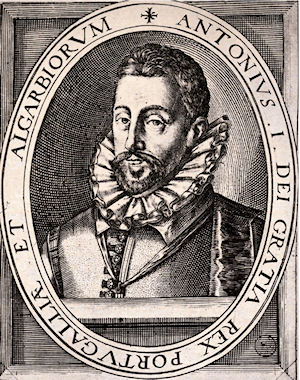 According to family history, D. António 'Prior of Crato' hid at Paço de Lanheses when he was fleeing the Castilians and trying to form an allied army against Philip II of Spain.
According to family history, D. António 'Prior of Crato' hid at Paço de Lanheses when he was fleeing the Castilians and trying to form an allied army against Philip II of Spain.
This episode took place before he fled to exile and after the defeat of the Portuguese army that supported him by the Duke of Alba, in the succession to the throne, in Lisbon on 25th August 1580.
Zé do Telhado and the Countess of Almada

One day, the countess's rooms were invaded by a breathless and frightened household maid.
The St. James Way

“Those who walk the «Caminho de Santiago», will be happy to experience the reconciliation of the spirit with the serenity which was once lived in the past, while visiting the monuments on the way and enjoying the local landscapes”.
A Caminho de Santiago, roteiro do peregrino, Conde de Almada, Lello Editores, jan 2000.
Lanheses, its river and valley, have always been an historical centre for a large movement of people and goods. Let us remember that several pre-medieval canoes were found on its banks and there is strong evidence of the Roman route "Per Loca Maritima” came through here and is related to the legend of River of Forgetfulness, discussed earlier.
There is even documentary evidence that in the eighteenth and nineteenth century two foreign pilgrims, one on his way to Santiago de Compostela and the other coming from there, died in this parish.
 Indeed, this place was one of the most important cross roads on the Caminho de Santiago.
Indeed, this place was one of the most important cross roads on the Caminho de Santiago.
Portugal ackowledged the discovery of the tomb of the Apostle St. James in Compostela in Galicia in the 9th century. In the 11th century Galícia was still part of the Portucalense County, when Count D. Henrique, father of the first king of Portugal asks St James his blessing for the conquest of Coimbra. Several of his descendants did the same, among them the best known are Queen D. Isabel and King D. Manuel I.
Here in Lanheses the proposed footpath overlaps the Pilgrim's trail (PR 22), towards Serra de Arga, being separated at the junction that goes to the Monastery of St. John.
At Geraz do Lima crosses the river Lima, where an interesting milestone dated March 1742, refers to the privileges and price that passengers had to pay the boatman.
Then, the path crosses the Roman bridge of Linhares over the stream known by the name of Olho before arriving at the small square of Seara, where goods were weighed in and where an ancient tile oven is still visible.
Not far lies our Paço de Lanheses with its fountain whose water was offered to those who walked by.
From there it follows to the Santa Eulália de Lanheses Parish Church and to several other chapels, shrines and crosses.

